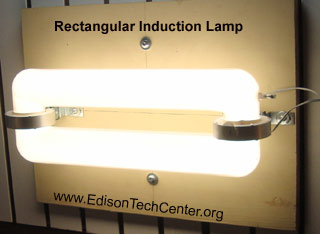From SEGA technologies

LED lamps get the more attention but are more expensive. The real winners in terms of longevity, lumens per watts are induction lamps
Induction lamps have lifespan of over 60,000 hours and has 50% less energy consumption compared to CFL, mercury vapor, high pressure sodium lamps
LED have light conversion efficiency of 55 lumens per watt; there are those with 70 lumens per watt but are expensive. Induction lamps have efficiency of 65 to 82 lumens/per watt. Thus a 200 watt LED will produce l1,000 lumens (the claim for 12,000 lumens for a a 120 watts fixture was over stated?) and a comparable induction lamp will produce 16,000 lumens (on the high side). Thus induction lamps would have superior in high illumantion area like theater, gyms or outdoors (we should have read this before)
They have faster restart, high power factor, and uses less mercury (and therefore less toxic) and more environmentally friendly
Price: induction lamps will cost 75 to 80% lower than a similar LED lamps fixture.
Advantages of Induction lamps
1. Longer life since there are no electrodes that degrade;
2. Lower operating cost
3. High power factor
4. Instant restart compared to MV and HPS lamps; there is not much heat generated;
5. Lower maintenance cost due to high lumens/watts;
6. Use less mercury vs flourescent and CFL lamps
These
benefits offer a considerable cost savings of around 50% in energy and
maintenance costs for induction lamps compared to other types of lamps
that they replace.

Comparison between Metal Halide (MH) High Pressure Sodium (HPS) and Induction Lamps

















